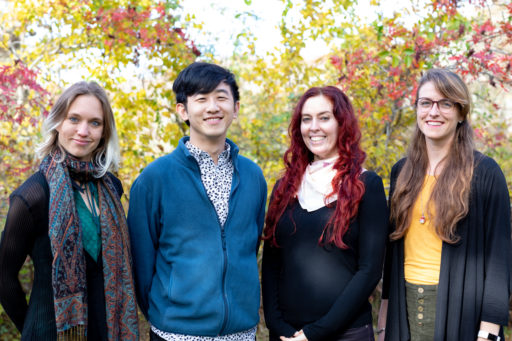The role of homeotic (Hox) genes in the evolution of body morphology
Are changes in the expression patterns of Hox genes a major driver in the evolution of morphological diversity?
The Hox genes are known to play a major role in specifying regional identity along the anterior-posterior axis of animals from a wide range of phyla (Manak and Scott, 1994). Their potential role in altering body plan during evolution was recognized soon after their characterization (Lewis, 1978). For example, since altering the regulation of the Hox gene Ultrabithorax (Ubx) transforms a normally two-winged fly into a four-winged mutant, it was thought that evolutionary changes in Ubx regulation might explain the difference between insects that normally have four wings versus those that normally have two (Lewis, 1978). A comparison of Ubx expression in flies and butterflies (butterflies normally have four wings) revealed that in fact the difference does not seem to be at the level of Ubxregulation (Carroll et al., 1995), but instead at the level of genes downstream of Ubx (Weatherbee, 1998). Thus, despite their clear potential to alter body plans upon mutation in Drosophila, it has been difficult to document actual evolutionary changes in body plan that can be attributed to alterations in the initial boundaries of Hox gene expression.
Recently, however, we have discovered a striking correlation between Hox gene expression within the crustaceans (lobsters, shrimp, crabs, etc.) and the evolution of their body morphology (Averof and Patel, 1997). By analyzing the expression of the Hox genes Ubx and abdominal-A (abd-A) in thirteen crustacean species in nine different orders, we have documented that the initial embryonic anterior expression boundary of Ubx/abd-A predicts the position in the body plan where there is a transition from feeding appendages to locomotory appendages. These two types of appendages have clearly different morphologies associated with their functions . Depending on the particular crustacean species, this transition can occur anywhere from the first to the fourth thoracic segment. We also have found evidence that in a few instances appendages with an intermediate morphology are associated with segments showing intermediate levels and/or mosaic patterns of Ubx/abd-A expression during development. Where they occur, the thoracic feeding appendages are morphologically similar to the feeding appendages of the head, and thus these thoracic feeding appendages can be thought to represent an evolutionary homeotic transformation. Given the widely documented role of Hox genes in specifying segmental identity in a number of organisms, we suggest that the association between Hox gene expression and appendage morphology during crustacean evolution may be direct and causal. Our observations reveal that homeotic genes may play a role in the normal process of adaptive evolutionary change.
Our continued studies in this area have shown that developmental timing of expression is also an important parameter in controlling evolutionary change. In crustaceans, the initial boundaries of expression correlate with the transition from feeding to locomotory morphology, but later alterations in expression levels correlate with the relative size of various appendages. We have also begun to analyze the expression of an additional Hox gene, Abdominal-B (Abd-B). We have found that the expression domain of this gene also varies during crustacean evolution and appears to be associated with the position at which the anus will form. We have also examined the role of Ubx/abd-A in regulation of abdominal appendages in insects and found that there has been a variety of sequential changes in this regulatory interaction within the insects (Palopoli and Patel, 1998). It appears that in crustaceans and phylogenetically primitive insects, neither Ubx nor abd-A repress limb formation. In phylogenetically intermediate insects, abd-A, but not Ubx, appears to repress limb formation. In the most phylogenetically derived insects, both Ubx and abd-A repress limb formation.
Team Crustacean 2020

Erin Jarvis, Dennis Sun (Berkeley), Heather Bruce, & Jennifer McCarthy
Current Members
(Click to see individual student projects)
Former Undergraduates
Konnor La
Jennifer Koh
Jennifer Wang
Shagnik Ray
